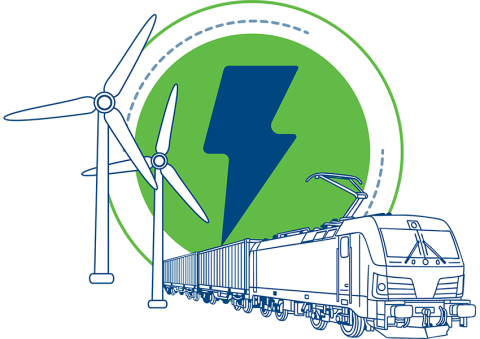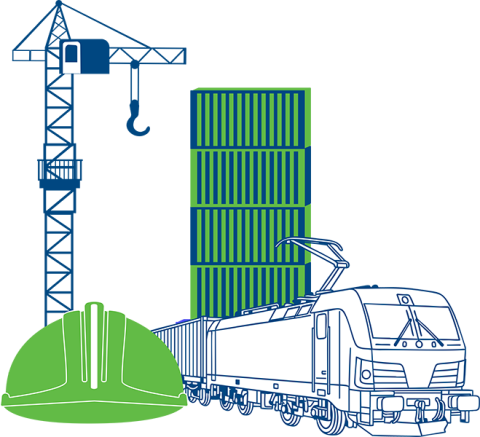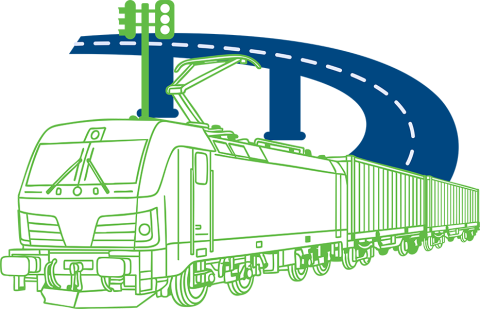Door-to-door Combined Transport is the future of European freight. By linking rail, road, and waterways, it cuts greenhouse gases by up to 90% and energy use by 70%. It also improves truck driver conditions and eases road congestion. Zero Carbon Combined Transport aims to fully decarbonise inland freight by 2050.
The 5 efficiencies of Combined Transport

ENERGY
Door-to-door Combined Transport uses 70% fewer kilowatt-hours of energy to produce a tonne-kilometre of transport performance compared to the unimodal long-distance trucking alternative.
The energy used by Combined Transport is dominantly grid-electric, which means a direct supply from Europe's increasingly carbon-neutral power generation, thereby reducing the continent's dependence on imported fossil fuels.
SAFETY
More Combined Transport not only slows road degradation, but also contributes to a dramatic reduction in accidents due to the superior safety performance of non-road modes.
This has a further positive impact on the frequency and extent of road congestions thus reducing the external costs of freight transport.


INFRASTRUCTURE
The infrastructure of non-road means of transport is more suited to accommodate the heavy axles required by efficient freight transport than road.
The per tonne-kilometre infrastructure degradation of door-to-door Combined Transport is thus a fraction of that of its unimodal road alternative.
Slower road degradation means less frequent roadworks resulting in reduced disruptions and works-related congestion.
LABOUR
The number of tonne-kilometres produced per worker employed in a door-to-door Combined Transport operation is multiple times higher than that of workers active in the unimodal trucking alternative. At the same time, Combined Transport jobs offer a superior work/life balance to the workers, especially in comparison to truck drivers, promising to alleviate the looming truck driver shortage.


ENVIRONMENT
The harmful emissions of door-to-door Combined Transport, such as PM10, PM2,5, NOx and ozone, are a fraction of those produced by unimodal trucking. The greenhouse gas emissions of Combined Transport are up to 90% lower than that of the unimodal trucking alternative. Zero-carbon door-to-door Combined Transport has been demonstrated to be viable with products and technologies already on the market today, making it the most cost-effective solution for Europe.